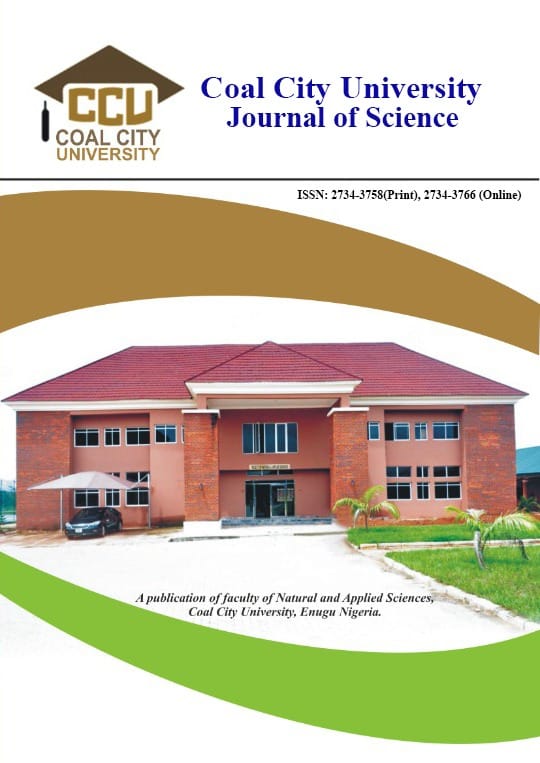APPLICATION OF SELF-POTENTIAL GEOPHYSICAL METHOD IN INVESTIGATION OF PB-ZN SULPHIDE DEPOSITS IN ENYIGBA AND ENVIRONS, SOUTH EASTERN NIGERIA
Abstract
The self-potential (SP) method was employed to investigate lead-zinc sulphide ore deposit veins in the Enyigba area of Ebonyi State, southeastern Nigeria. The study area lies between latitudes 6°09′00″N to 6°14′00″N and longitudes 8°05′00″E to 8°10′00″E, approximately 13 km south of Abakaliki. The lithological units of the formation consist mainly of shales, underlain by the Abakaliki Shale Formation of the Asu-River Group. Field measurements were carried out using the ABEM SAS 1000 to obtain SP values, which were subsequently plotted and analyzed using Surfer 11.0 software. Data interpretation was conducted qualitatively. The recorded SP values consisted of both positive and negative anomalies. The positive anomalies ranged from +0.15 mV to +70.38 mV, while the negative anomalies ranged from −0.1 mV to −110.25 mV. The iso-potential maps generated from the data revealed the distribution of Pb-Zn sulphide veins within the surveyed area. Results indicate a fairly good comparison across datasets. Notably, the negative SP anomalies were found to be the most diagnostic, signifying the presence of sulphide ore deposits. The survey further suggests that the mineralized veins exhibit varying orientations, with the majority trending in the NW–SE direction. In conclusion, the SP survey results strongly suggest the possible existence of lead-zinc sulphide ore deposits in the Enyigba area. However, for greater accuracy, it is recommended that the SP method be integrated with other geophysical techniques such as gravity, magnetics, electromagnetic surveys, or resistivity methods. Such integration would provide a more comprehensive understanding of the ore deposit distribution and the pattern of mineralization.




